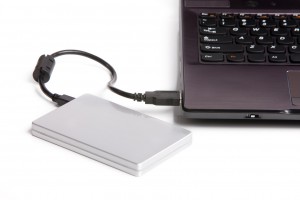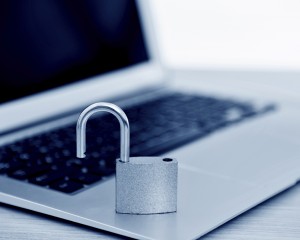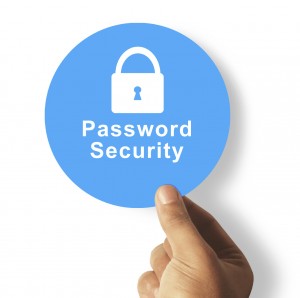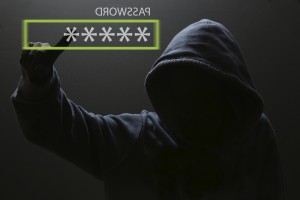Anyone familiar with the Internet should have come across websites that talk about using cookies to enhance the user experience at some point. Some sites even ask permission to continue using them. In those instances, a choice lies before you: give away some privacy to gain a possible benefit, or keep your privacy at the expense of easy web browsing.
If you wonder which choice is the right one, you’re not alone. Cookies make everyone a bit nervous. But, the questions that follow below will help answer the question by explaining what browser cookies are and how they work; and set your mind at ease through instructions for enabling or disabling cookies on Internet Explorer, Firefox, and Google Chrome.
What Are Browser Cookies?
Cookies are small — sometimes encrypted — text files stored on your computer. Web developers use them to improve website efficiency and to facilitate certain functions, like collecting login information and online shopping cart data.
Some cookies are termed “session cookies.” These primarily store basic user information so that you don’t have to re-enter your name and password multiple times throughout a visit to a specific site. These are also the cookies that make online shopping possible — without them, your shopping cart would reset with every new page you clicked on.
Other cookies are “persistent.” They allow website owners track unique visitors. These cookies are created the first time you visit a website, and they exist until they hit their website-determined expiration date or until a user manually clears them away.
In some instances, persistent and session cookies work in tandem. For example, when you go to Amazon, the site likely recognizes the persistent cookie associated with your user ID and adjusts the settings to match your stored preferences. At the same time, as soon as you log in to the website, you enact a session cookie, which will last until you log out. Session cookies streamline the process of getting to a website, while persistent cookies tailor the experience so that you see relevant offerings.
How Do Cookies Use My Information?
Cookies work by giving your computer a unique user ID. Every time you type in a URL, your browser contacts the site’s server and requests the page. At the same time, your browser crawls your computer to find an associated cookie. If the cookie exists, the browser shares the information with the website’s server; if it doesn’t exist, the website will create and save a new cookie.
Many ads also make use of cookies. To understand this process, it’s important to understand the difference between first-party cookies and third-party cookies. If a cookie comes from the same domain as the page you’re viewing, it’s a first-party cookie. A cookie served from a different domain than the page you’re viewing is a third-party cookie.
If you’ve ever wondered why you keep getting pictures of the same ads across different sites, third-party cookies are the answer to that mystery. When you encounter an ad on a website, chances are high that a site you’ve previously visited has set up a deal with the third-party advertiser: the site shares your information so that the ad platform can customize its materials to match your history. As you keep browsing other pages, those third-party advertisers’ cookies recognize your user ID and produce ads that capitalize on your past browsing.
Is It a Security Concern to Have Cookies on My Browser?
While Internet cookies can’t transmit viruses to your computer, they may pose some privacy concerns. The third-party cookies that influence which ads you see actually collect a lot of information. They record when and where you saw an ad — and whether you clicked on it. That data is then sent to the cookie “owner,” where it’s recorded and analyzed to further tailor the ads you see and how often you see them.
 There are a couple of risks found with these cookie collection setups. First, third-party cookies don’t necessarily follow the privacy and security policies set by the site you’re on. Second, you have no guarantee that the cookies are transferring information securely. This leads to other security problems, including the possibility that your activity will be tracked and exploited by people with intentions other than serving ads.
There are a couple of risks found with these cookie collection setups. First, third-party cookies don’t necessarily follow the privacy and security policies set by the site you’re on. Second, you have no guarantee that the cookies are transferring information securely. This leads to other security problems, including the possibility that your activity will be tracked and exploited by people with intentions other than serving ads.
Fortunately, you can take control of the data collected about you through your browser settings.
How Do I Disable Browser Cookies?
Every browser is different, but most provide customizable browser settings that can be used to disable third-party cookies. Here’s a closer look at how to check your cookie settings for the top three most popular web browsers.
Google Chrome
To block cookies in Google Chrome, you’ll go to the “Settings” option in the menu. Scroll down until you see “Show advanced settings,” and click on it. Several new options appear, including “Privacy,” which is where you can set parameters for third-party cookies.
In the privacy section, click on “Content settings.” You’ll see two points of interest: first, a checkbox to block third-party cookies and sites. Check the box if you wish to disable third-party cookies. Second, you’ll see a radio button next to “Block sites from setting any data.” If you do choose this option, know that it will also block first-party cookies. This may cause some sites to cease working, as many sites that require login information also require first-party cookies to serve content.
Once you’ve set the options you want, click “Done” to save the changes.
Mozilla Firefox
In Firefox, click the menu button and choose “Options.” Next, select the “Privacy” tab, and set “Firefox will:” to “Use custom settings for history.” That should give you the options for cookie control. You can enable or disable them altogether, or you can just take care of third-party cookies by choosing “Never” from the dropdown list next to the “Accept third-party cookies” line.
In that same area, you’ll also see an option for how long your browser stores cookies. If you’d prefer to allow third-party cookies until you end your browsing session, you can make that selection. Once you’re done with your changes, close the “Options” tab to save them.
Internet Explorer
If you have Internet Explorer (IE) 11, open the browser and look for the “Tools” icon in the upper right of the screen — it looks like a little cog. Choose “Internet options” from the drop-down menu, then click on the “Privacy” tab. From there, select the “Advanced” button. That should create a pop-up that will let you control how first-party and third-party cookies behave.
If you’d prefer to just block cookies from certain sites, the “Sites” button in the “Privacy” tab will give you that option. After you’ve made all the changes you want, click “OK” to save the settings and close the window.
Should I Clear My Cookies?
As you use the above information to check out your current cookie settings, you’ll notice the option to clear cookies. How often clear your cookies is totally up to you. If you’re happy with your cookie settings and your browser is working okay, there’s no need to adjust anything. If your browser is running slow, on the other hand, it might help speed things up to clear out cookies and other stored data.
Additionally, any time you use a public computer, it’s wise to completely clear out all logs of your activities, including your cookies, browsing history, and cache.
Browser cookies can be confusing, but they can also substantially improve your online experience. And if your current Internet plan is keeping you from making the most of that customized browsing experience, call 855-640-4510 today for more information on CenturyLink® High-Speed Internet and Internet bundle options.
A computer’s operating system (OS) — the software that supports the computer’s basic functions — has a variety of responsibilities, including managing memory, external devices, and applications. Computers generally come pre-loaded with an OS, so you don’t need to worry about purchasing one separately, though it is possible to upgrade or change systems. Knowing what OS your computer runs system can be especially beneficial when installing new software and for keeping your computer updated and running efficiently.
How to Check Your Operating System
If you ever need to find out which operating system you have, simply start your computer and wait for the first image to appear. Most likely, the name of the operating system will be one of the first graphics on screen as the computer restarts.
PC users who are still unsure can click the Start icon, typically found in the lower left corner of the screen. When the Start menu appears, click “Run,” and then type “winver” (short for “Windows Version”) into the search function. An “About Windows” section will appear, listing your specific OS.
Apple users should click on the Apple icon, typically found in the top left corner of the screen. Select “About This Mac,” and a window will appear with the name of the operating system.
Types of Operating Systems
Now that you know what type of OS you have, get to know it better. There are many different operating systems, but most of them fall into one of four major families, each with their own unique benefits and shortcomings.
Windows®
Windows is a Microsoft® operating system compatible with a vast number of different programs, computers, and devices. An industry standard, Windows dominates almost 90 percent of the desktop OS market share. Microsoft provides various versions of Windows, but its most recent versions include Windows 10, Windows 8, Windows Vista™, and Windows XP.
Pros:
Windows is by far the most popular operating system, so users will likely find it familiar. It’s compatible with most devices and software and has extensive support and freeware application options available. Many employers and gamers prefer Windows.
Cons:
Though Windows is compatible with almost any hardware, it has high licensing costs. Matching or transferring applications to other systems can also be expensive. Because it is the most widespread system, Windows is also the most susceptible to malware. Security is limited, so users probably need proprietary software to keep the computer safe.
OS X®
The OS X software family from Apple® is the second most popular on the market. OS X is known for being much more restrictive than Windows. The most recent OS X versions have been nicknamed El Capitan, Yosemite, Mavericks, and Mountain Lion.

Pros:
Since Apple keeps its systems tight, users experience fewer freezes and crashes. Security is stellar, with minimal risk of malware infection. Many find the user interface simple and intuitive, and Apple fans can easily synchronize their devices.
Cons:
OS X can only be used with Apple products. And though Apple has low maintenance and support costs, the initial computer purchase is relatively expensive. Because it is a closed system, options are limited and customizability is minimal.
Linux®
Extremely customizable and widely supported, Linux is a fantastic operating system for those who want total control over the user experience.
Pros:
Linux is known for its versatility. In fact, it’s compatible with most hardware and is entirely customizable. Linux offers a large library of free open-source software for those interested in additional options. Extremely secure, Linux is even less prone to malware than OS X. Best of all, Linux is completely free.
Cons:
Because Linux is so customizable, it can be confusing for inexperienced users. Though options are virtually limitless, it may take time to figure out how to manage them. Due to the relative obscurity of the system, users may find support limited for external applications.
UNIX®
UNIX and Linux together control a large percentage of the server market. Like Linux, the UNIX operating system is known for its versatility, though it is best suited for programmers rather than the casual user.
Pros:
UNIX is available on almost all hardware platforms and is extremely customizable. Loaded with virtual memory, UNIX allows you to run various programs simultaneously without interference or system crashes. UNIX is secure, stable, and built to endure. UNIX is also completely free.
Cons:
UNIX can be extremely confusing for the computer novice. Because it is less widely known, it may be more difficult for UNIX users to find support.
When it comes to choosing an operating system, consider your needs — are you using your computer mainly for gaming, designing, word processing, or something else? If you know what you want out of a system, you can easily determine which one is best for you. To make the most out of your operating system’s abilities, you’ll want the fastest Internet speed available. Find out more about CenturyLink High-Speed Internet and CenturyLink home service Internet bundles by calling 855-640-4510.
Most internal hard drives offer between 120 gigabytes (GB) to 2 terabytes (TB) of storage space. A single photo taken by an iPhone 4 takes up 2 megabytes (MB) of storage, and a 10-minute high-definition video can require up to several hundred megabytes of storage space. Add together all the photos and videos from your last five vacations — plus all the programs and apps your computer runs — and you can run out of storage space surprisingly quickly. That’s when an external hard drive comes in handy.
Purpose of an External Hard Drive
An external hard drive connects to your desktop, smart device, or laptop, and can store a significant amount of additional data. It also provides additional protection for your files. If your internal hard drive is damaged or otherwise compromised, an external hard drive ensures you won’t lose your important information.
External hard drives vary in storage capacity and portability. If you are a movie or music lover and frequently download media, a large external hard drive would be useful. If you need extra storage for smaller files, an external hard drive with less capacity should suit your needs. For example, a 320GB external hard drive can store up to 80,000 songs or 80 DVD-quality movies, while a 2TB external hard drive can store up to 500,000 songs or 500 movies. With a variety of options to choose from, you can always find the perfect external hard drive for your needs.
Types of External Hard Drives
External hard drives are divided into two primary categories. The first type allows you to transport it easily, whereas the second type is intended for home use.
-
Notebook-class
Notebook-class, or portable, hard drives are normally small enough to fit in your pocket. Typically, these hard drives do not provide more than 1TB of storage. Notebook-class external hard drives are frequently used with laptops and by people who need extra storage when traveling. Portable drives, like this 32GB SanDisk, even allow you to back up photos that are overloading your smartphone or tablet.
-
Desktop-class
Desktop-class external hard drives require a power adapter and are designed to stay in one place. Some desktop-class drives come with a built-in fan to provide extra cooling and help the device last longer. The maximum storage a desktop-class external hard drive will provide is 8TB. External hard drives may be designed specifically for Mac or PC computers, so double check before making your purchase.
Types of Hard Drive Connections
You can choose how your external hard drive connects and communicates with your computer based on your storage requirements and your computer’s capabilities.
-
USB
The USB — or flash — drive is one of the most popular external hard drives because there is no setup involved. Your computer instantly connects with the drive once you plug it in to your USB port, and files are saved and stored easily. Because USB drives are portable and simple, they are often used to store and share “everyday” files, like school and work documents.

-
Firewire
Firewire 800 ports, originally called Firewire 400, transfer files at a rate of 800 Mbits per second. Because of this quick speed, hard drives with the Firewire 800 port are popular for transferring large files like videos.
-
Thunderbolt
While Firebolt is still in use, Thunderbolt is its successor. Thunderbolt is currently in the second generation and is among the fastest ways to transfer files, reaching speeds of up to 20 Gbps. To put that in perspective, 1 gigabit is equivalent to 1000 megabits!
-
eSATA
Though External Serial Advanced Technology Attachment (eSATA) ports are not as commonly used as USB or Firewire, they provide high file transfer speeds. eSATA is the external version of SATA, which is used in internal hard drives. There are many popular eSATA external hard drives available.
External Hard Drives and the Cloud
In addition to external hard drives, there are a number of Cloud storage options. The Cloud allows you to access files from anywhere, giving you an easy way to share information with others.
With Cloud storage, your files are saved through a third-party host over a network — typically the Internet. You can usually get small amounts of storage space free through various Cloud services, such as iCloud or Dropbox. However, if you want to save large files, or a large number of files, you will likely need to pay for additional storage.
Both Cloud storage and external hard drives give you additional file security and space. Large external hard drives work well for items you don’t use every day but take up a lot of storage, like photos from past trips. You can then access other, frequently used, files from anywhere through the Cloud.
Backing Up Your External Hard Drive
It’s a good idea to get into the habit of backing up your files every time you use them, and you should consider backing up your pictures and videos immediately. For other files, such as work-related files that you regularly update, you should try to perform a backup every 2 to 3 weeks, to ensure nothing is lost if anything goes wrong with your computer. If your computer has a habit of crashing or losing files, you should be vigilant about backing up your work.
An external hard drive can be a lifesaver. Not only will it provide you with endless additional storage options without buying a new computer, it also ensures you don’t lose anything important. Figure out what your storage needs are — you can check how many GB of free space your Mac or PC has left — and make sure your files transfer quickly to your external hard drive by calling 855-640-4510 to learn about CenturyLink’s High-Speed Internet and special offers on Internet home service bundles.
If you’ve used a computer for any amount of time over the past few decades, you have likely seen notices or pop-ups about Java updates and patches. But do you know what those prompts are referring to? This article will take a closer look at the basics of Java in both web design and everyday tech interaction.
What Is Java?
Java is both a computing platform and programming language that has been used since 1995. It was designed to make websites compatible and multi-functional across different browsers and devices. While Java did see a dip in popularity as a programming language a few years back, recent updates have helped boost its popularity once again.
Keep in mind that Java is different from JavaScript, which is a scripting language used to add interactive functions to a website. Java applets require software or plug-ins to function, whereas most browsers are capable of reading JavaScript without any additional support.
Do I Have to Have Java on My Website?
If you have a website, the programming languages you use will depend a lot on what you want to do. Java or Python will allow you to build out applets, while languages like JavaScript can be used to optimize user experience on a website or form. Each of these languages can improve the interactive features of your website, but they’re not the only options out there.
 Do keep in mind that Java is an object-oriented programming language that requires software known as a “virtual machine” to be read and interpreted. Because most desktop browsers don’t yet natively read Java, users who don’t have the proper Java software installed may not be able to interact with the Java portions of your site. Further, users can disable ancillary software and functions — including those that involve Java and JavaScript — from their browsers, which means any applications that use those languages may also be disabled.
Do keep in mind that Java is an object-oriented programming language that requires software known as a “virtual machine” to be read and interpreted. Because most desktop browsers don’t yet natively read Java, users who don’t have the proper Java software installed may not be able to interact with the Java portions of your site. Further, users can disable ancillary software and functions — including those that involve Java and JavaScript — from their browsers, which means any applications that use those languages may also be disabled.
Whichever language you choose, it’s a good idea to use programmed site enhancements to improve the user experience rather than to provide basic functionality. That way, users with proper software enabled will have a good experience, but users who have disabled access will still be able to navigate your site.
Where Can I Find Java Programmers?
Finding a good Java programmer can be tricky, but it is doable. Sites like Upwork and Toptal, for example, are great avenues for finding freelance developers. Programmers simply set up site profiles that feature their skills, experience, and the kinds of work for which they are available, and you can pick the one with the resume that best meets your needs. Also, you can take advantages of various guides to Java interview questions which, even though designed for programmers as interview practice, can help a lot for the recruiters when interviewing freelance developers.
Another good place to find Java programmers is through training programs and schools that teach Java. Most schools have job boards where you can post your job and get in touch with qualified programmers.
Is Java Easy to Learn?
For people who are interested in programming, Java is a great place to start. It offers a solid foundation on which to build and grow as a programmer, and it shares some notable commonalities with C and C++ languages.
Java is also widely used, meaning it has a lot of potential application. Everything from computer programs to Android apps make use of the Java language, so taking the time to learn Java can open a lot of doors to future employment.
While Java may seem like a more technical coding language, there are plenty of online tutorials and other learning materials to guide you through the essentials. Websites like Udemy and Codecademy let you jump in start working with Java immediately.
Is Java Safe?
Java as a language isn’t more or less secure than any other programming language. However, there are some security concerns involved with the Java platform’s software and plug-ins. As with any application or software, the best way to ensure security is to make sure you are running the most current version. Updates are developed regularly to patch security breaches and fix other bugs and issues that may make the program — and your computer — vulnerable.
Even with patches and fixes, however, Java has come under scrutiny recently for failing to fully repair some security issues. To answer the ongoing threat of security vulnerability, Java’s parent company, Oracle, has announced that the next major version of Java will no longer plug directly into the user’s web browser — a huge step in making Java software safer. Until that version is released, however, you’ll want to carefully assess whether the Java plug-in is necessary for your daily web browsing. If most sites you visit don’t use Java applications, you’re probably okay to disable or uninstall the plug-in.
To fully appreciate the impact of the Java language and platform, make sure you’re surfing the Internet with the security and speeds you need. Call 855-640-4510 to learn more about CenturyLink® High-Speed Internet plans and CenturyLink bundle options today.
Protect Your Family from Cyber Attackers
Once you decide on a great high-speed Internet or home service and Internet bundle, you’ll need to take steps to keep your information safe before just rushing out into the world wide web. Conceptually, there should be no safer place than your home, but when your computer or home network is attacked by a hacker or virus, your whole family is vulnerable. Protect your personal information by recognizing the signs of a cyber attack and taking countermeasures to block hackers, viruses, malware, and more.
How to Recognize a Cyber Attack
Computer viruses and malware are more common on personal computers than a breach by a hacker, but that doesn’t mean you won’t get hacked. Here are common signs that your computer or home Internet may have been compromised.
- Mysterious Emails:
If friends and family report getting strange emails or posts on social media from your account, there’s a good chance your computer has a virus or your email has been hacked.
- Lots of Pop-ups:
A heavy barrage of messages or pop-ups, even when you’re not online, could indicate that you might have a virus.
- Extra Toolbars:
If you notice an extra or unfamiliar toolbar the next time you log on, it could be evidence of trouble.
- Changed Passwords or Locked Accounts:
This is one of the hallmarks of a hacker. If you’re locked out of your online accounts or get messages that your password has changed, be on guard.
- Sluggish Speeds:
A sudden change in the performance of your Internet connection can be a symptom of hacking. Hackers have to log in to your computer remotely, so if your computer is targeted, the attack will use up your bandwidth.
- A Ghost in the Machine:
If your computer starts acting like it has a mind of its own, beware. Random mouse movements, mysterious new software installs, unsolicited Internet searches, and disabled security programs indicate a hack or a virus.
How to Thwart a Cyber Attack
Now that you know what to look for, you need to know how to respond to an attack. Use these cyber attack countermeasures to protect your computer, home network, online accounts, photos, and other personal information.
-
Run Antivirus Software
Most cyber attacks start with some sort of malware or harmful download. At the first sign of a possible attack, use antivirus software to run a complete scan of your computer. Hopefully your antivirus software will detect the culprit and be able to repair and eliminate the threat. If you don’t current have antivirus software, be sure to put it at the top of your list. There is free software out there, but paid programs tend to be more reliable.
-
Identify Vulnerable Programs
Because many viruses take control of existing programs to alter host computers, the next thing you should check is your computer’s memory use. PC users can access Task Manager through the Start menu or by hitting Ctrl+Alt+Del, while Mac users should open the Activity Monitor application. At the bottom of either program, you’ll see a number indicating your CPU activity. The average dormant computer should operate at about 10 percent CPU usage. If your usage is 90 percent or higher, you likely have an issue. 
-
Determine the Source
Remember: virus symptoms may not show the extent of the damage — if the root cause isn’t eliminated, cyber attackers can keep causing trouble. Take note of what alerted you to a possible attack, whether it’s unwanted pop-ups, new toolbars, or changed passwords, and try to determine where those issues are coming from.
-
Uninstall Infected Software
As long as the dangerous program stays on your computer, you’re still at risk, so bogus software installs and extra toolbars need to be removed from your machine quickly.
- First, shut your computer down completely.
- Next, reboot the computer in safe mode, with networking turned off. Once you’re up and running, try to uninstall the infected software.
- Test for success by booting up your computer in the regular mode and making sure the fake programs, warnings, toolbars, etc., are gone.
- Finally, run another antivirus scan to catch any sneaky leftovers that may still remain.
- Depending on the severity of the attack, you may need to follow up by restoring your machine to a state before the attack.
-
Restore Changed Passwords and Locked Accounts
If a hacker managed to glean any information or passwords while your computer was vulnerable, they may attempt to access your accounts long after the original threat is gone. Thus, any accounts with changed passwords need to be adjusted as soon as possible.
- First, call the company that hosts the account to report that your login information has been compromised. Most companies can help you reset your username and password in minutes.
- Next, if the account that was hacked is an email or social media account, let your friends and contacts know about the breach so that they can be on guard against any dangerous messages that might come from your account.
- Finally, change the passwords on your other accounts as well. Make each password unique, random, and complicated with a combination of upper- and lower-case letters, symbols, and numbers. Don’t use phrases related to important dates, names, or any other identifiable information.
- Don’t open unfamiliar emails or links.
- Limit the files stored on Cloud backups.
- Encrypt photos and videos on your hard drive. Bitlocker is Microsoft’s built-in encryption solution, and Mac users can try FileVault.
Computers and the Internet are integral parts of our lives, and we need to protect them the same way we safeguard our homes and vehicles. Keep this guide handy to remind you of what to look for and how to respond in the event of a cyber attack.
Creating a password is something we’ve all done, usually multiple times. But do you actually know what you’re doing when you set up a new password? Do you know what makes a strong or weak password?
It seems like every other week we hear about another major retailer or business failing victim to a mass data hack or security breach. And if multi-million dollar corporations aren’t safe, it’s hard to believe that any of us stand a chance.
The following is an outline of what makes a strong password, what to avoid when setting your password, and tips and tricks for keeping your online activities secure.
Tips for a Safe Password
First off, there is no such thing as a completely hack-proof password. With the advancement of super-computers and hacking techniques, no password is totally safe. But there are steps you can take to protect yourself against identity theft and security fraud by creating stronger, hard-to-crack passwords.
Characteristics of safe passwords include as many of the following as possible [1]:
- At least 10 characters
- Upper and lower case letters
- Numbers and special characters
- Not found in a dictionary
- Not based on personal information- i.e. birth date, phone number, address, etc.
Avoid the following pitfalls when creating your password
- Passwords that are too short
- Passwords that are not complex enough
- Passwords that are too easy to guess
- Passwords that are already in use
- Passwords not protected by two-step authentication
Just a heads up
Don’t use password as your password! The following is a list of the most hacked passwords from analysis of over 450,000 hacked Yahoo! accounts, according to ESET, an IT security firm[2]:
- 123456
- password
- welcome
- ninja
- abc123
- 123456789
- 12345678
- sunshine
- princess
- qwerty
Don’t Make It Too Easy
The easiest passwords for hackers to crack are the ones that require little to no effort to create or type in. And while it might seem obvious which passwords you want to stay away from, some people are still using 123456, password, and abc123 as their passwords. In fact, these rudimentary, easy-to-guess passwords turned up in the Adobe security breach back in 2013[3].
Additionally, do not include well-known facts or information about yourself in your passwords, such as your favorite sports team, important dates, your dog’s name, or where you went to college. These trivial facts can easily be discovered with a preliminary Google search or a quick scan of social media.
Avoid One Password to Rule them All
Though it may be tempting to use one password for all your accounts, most security experts recommend using a unique password for every account. This is especially important for your most sensitive accounts like bank accounts, retirement accounts, and personal and professional email accounts. Imagine how much easier you’ve made it for a would-be hacker to access your accounts when all your account passwords are the same.
However, who among us has the time or the brain capacity to create and memorize a dozen unique, hard-to-guess passwords? That’s where password storing software comes into play. Not only can these helpful apps store all your passwords, they can also help you create stronger passwords and automatically change passwords in the event of a security breach.
Use Smart Password Storage
There are several password-assistant software programs that can store your passwords for you, like LastPass, 1Password, and KeePass. The highly-rated LastPass lets you sign up with your email address and a strong master password and then saves all your passwords in a secure vault. From the LastPass vault, you can organize the sites you frequently visit and easily sync your LastPass account with your other devices. Of course, LastPass is just one of the many available password managers. Many are free for the initial download, such as LastPass, and then require a yearly fee for upgrades or more advanced features. Do some research and read through the features to decide on a password manager that is right for you.
As an absolute last resort, type out all your passwords in Word doc—don’t save it but print it out and put in a safe place, like a locked file cabinet or a safe. This is a worst-case scenario and should not be relied upon as a secure method of password storage.
Beef it Up
As we know, longer passwords are harder to crack. And since you should always avoid including obvious or well-known names, dates, and facts about your personal life or family in your password, you need to get creative.
One way to do that is through unique phrase creation. For example, if you and your wife recently took a trip to Spain, you could structure your password around the phrase:
Our trip to Spain was one for the books and we can’t wait to go back!
Now shorten this phrase into a string of letters and symbols, and substitute numbers where applicable. So the password becomes:
0t2Sw14tb&wcw2gb!
The first word in the password phrase is our, which can be represented with a 0, or spelled-out, zero. The second word is trip and we can be represented with an upper or lowercase T/t. Continue to assign a number, letter, symbol, or unique spelling for the remaining words in the phrase—& for and, and 2 for to, 4 for for, etc.
Another method is to pick a sentence or phrase that is easy enough for you to remember, and use it as your password. Make sure the phrase is long enough and unique enough to be secure.
My dog goes 2 the park and chases ducks
This phrase can be used as a password and should be “beefed up” with spaces, numbers, upper and lower case letters, and punctuation.
My.dog g0es 2_the paRk @nd chases Duck_s
Check Your Work
Once you’ve crafted a few password options, try testing them with an online password checker like The Password Meter. The Password Meter shows you the overall strength of your passwords, breaks down the strengths and properties of your password, and also estimates the time it would take for different machines to crack your password in a brute force attack.
Memorization of your new password will take some time. Repetition and a few days of practice will help your fingers and brain get used to the new combination. However, an easier and safer way to remember your new passwords is to use a password manager to store all of your account passwords in one, safe location. If you go this route, you only have to remember the password for the management app.
Add Another Layer
When possible, use two-step authentication processes. This adds an additional layer of security and requires you to enter a second password that is sent to your cell phone. In the event that a hacker does gain access to your primary password, their efforts will be thwarted because the second password keeps your account safe. The only draw-back to this approach is the extra time it takes to log into your account. Though when your online identity and security are at stake, a few extra seconds doesn’t seem so bad.
The Major Points
Here are the main take-away points for creating a strong, hack-proof password:
- Use 10 or more characters
- Vary upper and lower cases
- Include symbols and punctuation
- Do not include personal info
- Test your passwords with a password checker
- Employ two-step authentication when available
For a faster Internet experience, check out CenturyLink Internet packages and get more information about awesome deals for Internet home service bundles here.
[1] http://www.makeuseof.com/tag/create-strong-password-forget/
[2] http://www.zdnet.com/article/top-10-most-hacked-passwords-123456-ninja/
[3] http://www.noip.com/blog/2013/12/04/9-easy-ways-choose-safe-secure-password/
Email is one of the most common forms of communication. One study estimates that by 2018, there will be more than 2.8 billion email users with 5.2 billion accounts. Email may seem intimidating if you don’t frequently use the Internet, but with a few simple steps you can create an account, check your mail, and send a message. You’ll quickly discover just how easy email is to use, and why it is the first choice for communication between many people.
Your Email Options
It is best to choose one of the popular options for free email accounts — such as Yahoo!® Mail, Gmail™, Microsoft Outlook®, or CenturyLink Mail — that offer a high level of Internet security. Because these servers have so many users, they also provide helpful how-to guides and make frequent updates to improve your email experience.
How to Set Up an Email Account
All of these providers make it easy to create an email account within minutes — we outline the steps below.
- Your desktop computer, smartphone, tablet, or laptop needs to be connected to the Internet, either through a wired, 3G, 4G, or Wi-Fi connection.
- Once you’re connected to the Internet, visit the website listed above for your preferred email provider. When you are a CenturyLink High-Speed Internet customer, you can create and use up to 11 CenturyLink Mail accounts. You’ll need to use your CenturyLink account information, including the phone number on the account.
- Next, fill in the information requested to create an account. This typically includes your first and last name, a username — which will become your email address — and password, your birthdate, gender, phone number, and a secret question. For better home Internet security, create a strong password by combining at least 12 upper and lowercase letters, numbers, and special characters. You can use your name for your username, but avoid including any other personal information, such as your birthdate or ZIP code. Consider writing down your username and password somewhere safe until you have it memorized.
- After reviewing your information, click the button at the bottom of the form to create your account. You’ll be taken to your inbox where you can get started using your email account. Take some time to explore your account, including your profile and settings. You can upload a photo to accompany your profile and fill in additional personal information, but keep these safety concerns in mind when setting up an account for your child.
How to Check Your Email
After you create your account, you can log in and out on your email provider’s website: Yahoo! Mail, Gmail, Microsoft Outlook, or CenturyLink Mail. You’ll input the username and password you created during setup.

- When you’re ready to check your email, log in to your account. On the left sidebar, you’ll see “Inbox,” “Sent Mail,” “Drafts,” and more. The number next to “Inbox” shows how many unread messages you have. Click on “Inbox.”
- Unread messages in your inbox appear in bold. Click on a message’s subject to open and read the email.
- To reply to a message, look for a “Reply” button or an arrow pointing left. You can also forward a message — useful when you want to send someone your hotel reservation or flight information — by selecting the “Forward” button or arrow pointing right.
- If you no longer need an email in your inbox, selecting “Delete” or the icon of a trash can will move it to your deleted items.
- When you use a public computer or Wi-Fi connection, or just want to be extra careful, log out of your email account when you finish checking and composing emails. There will always be an option to “Log out” or “Sign out” of your account.
How to Compose and Send an Email
- Log in to your account. While the layout varies slightly for every email provider, you should see a “Compose” or “New” button on the upper left of the webpage. A blank email will appear when you click on the button.
- At the top of the empty email form, you’ll see a “To” field. This is where you include the email addresses of one or more people who will receive your email. You can also choose to send a Carbon Copy (Cc) or Blind Carbon Copy (Bcc) to recipients. The Cc field is used when you want a recipient to receive an email not directly addressed to them, and the Bcc field allows that recipient to see your message without the “To” and “Cc” recipients’ knowledge.
- The subject line appears below the recipient fields. This serves as the title of your email and will be the first thing a person sees when they receive your email. The subject should include the general topic or question covered in your email, such as “Check out this video” or “You’re invited to our BBQ this weekend.”
- Below the subject line is space for the body, where you compose your message. You will also see a toolbar with formatting options. You can attach a file, insert an image, create bulleted or numbered lists, indent a paragraph, change the font size or color, and underline, bold, highlight, or italicize the text.
- Once you finish writing your email, click “Send.” Congratulations! You’ve just sent your first email.
The best way to become an email expert is to practice! Send test emails to yourself and friends, and take the time to review your account settings and features. When in doubt, visit your email provider’s help center or FAQ page for answers to common questions. To stay connected to your family and friends through email, you need a reliable and secure Internet provider.
Find out more about CenturyLink™ High-Speed Internet and affordable packages by calling 1-844-729-5755.
How CenturyLink Makes It Easier to Start and Grow a Small Business
Small-business owners have always had to overcome a number of obstacles to get their companies off the ground, but Internet development has helped alleviate some of those growing pains. CenturyLink has taken that assistance one step further, offering a variety of products and services specifically designed to help small businesses take advantage of the web. Here’s a closer look at how CenturyLink’s Internet technology is making it easier, faster, and more affordable than ever to start and grow your small business.
Improved Customer Communication
For most of the 20th century, it was acceptable for businesses to communicate with their customers by mailing a letter or meeting in person. Today’s consumers, on the other hand, expect more from the businesses they patronize. They want to be able to connect with your company quickly — and if they can’t, they may take their business elsewhere.
CenturyLink offers a range of small business solutions to help your company connect with your customer base promptly and affordably. With CenturyLink® Hosted VoIP plans, for example, you can take advantage of innovative technologies like voicemail-to-email integration and find-me/follow-me call routing. This Internet-based setup effectively allows you to turn almost any location into a state-of-the-art workplace.
Enhanced Collaboration
CenturyLink doesn’t just help businesses connect with clients — it can also help employees connect with each other, fostering teamwork and idea-sharing. Prior to the Internet, employees collaborated with co-workers and business partners in person, which may have required extensive traveling. Now, the Internet allows employees to attend virtual meetings and video conferences with people across the city, the nation, and all over the world, without ever leaving the office.

The key to successful online collaboration is a consistently fast and secure Internet connection. With CenturyLink® High-Speed Internet, your business gets a direct connection to CenturyLink’s dependably fast network.
Convenient Storage and Software
In the past, small businesses stored everything from proprietary information to client contracts in filing cabinets. Then, discs, CDs, and external hard drives became common storage devices. While some of these methods still have value, the Internet enables small businesses to share and store huge amounts of data electronically via the Cloud. Additionally, software that may have been priced out of reach for small businesses is now quite affordable when accessed through Cloud technology.
CenturyLink’s suite of Cloud-based business applications include several web management applications that can help you run your small business like a large-scale corporation. You won’t be charged a license fee, and your applications will always be kept up-to-date. As an added bonus, these programs are flexible, scaling with your company as its needs change and grow.
Affordable Oversight and Service Bundling
Perhaps the biggest benefit of Internet development is that it has allowed companies like CenturyLink to expand their services, offering more comprehensive support for a bigger range of tools. CenturyLink® Managed Office, for example, is an enhanced small business solution that bundles Internet and VoIP phone services with a variety of Cloud applications. What’s more, with this package, CenturyLink takes care of all the technical details, including equipment installation, service management, and data backup with round-the-clock customer support — so you can focus on running and growing your small business.
Internet development has made technology that was once only affordable to large corporations cost-effective for companies of all sizes, arming small businesses with the right online tools to compete in today’s competitive global market. CenturyLink provides everything your small business needs for success — high-speed Internet, advanced phone service, reliable Internet connectivity, and a variety of Cloud-based applications — all in one place. Reach out to a service representative to talk about your service and bandwidth needs today.
Employees working remotely — or telecommuting — has become the norm for 43% of Americans according to a recent survey, and that number will only continue to grow. Telecommuting is ideal for individuals who wish to work from home while maintaining a steady job with a company, as opposed to working as a freelancer or owning their own small business.
Today, multiple industries offer telecommuting capabilities, including fields you may not expect, from marketing and accounting to sales and customer service. If you’re curious about the benefits of telecommuting or how you can work from home, follow our guide.
Advantages of Telecommuting
Working from home can be advantageous for both you and your employer in a number of ways.
- Increased Productivity: A Stanford study found that people who worked remotely made 13.5 percent more calls than those who were in the office. This added up to a company gaining the equivalent of an extra workday a week out of each telecommuter. Those same remote workers were more satisfied with their job and were half as likely to quit.
- Reduced Stress: Research conducted by Staples revealed that telecommuters experience 25 percent less stress than employees working in the office. As a result, the remote workers were also happier and healthier — and they were more inclined to be productive and require less sick time.
- Greater Creativity: Studies show that people are at their most creative early in the morning and late at night, not during the typical nine-to-five workday. Working remotely allows employees to work during their most productive and creative times, whether that’s late at night or before sunrise.
Negotiating for Working from Home
Even if your company doesn’t have a telecommuting policy in place, you can still speak with your boss about working remotely. Start by creating a list of your daily, weekly, and monthly tasks and note which ones can be performed remotely and which ones must be done in the office. This will give you a good idea of how realistic your telecommuting opportunities are. You will also want to discern how you can successfully complete these duties at home, outline a suggested work schedule, and explain how you will submit completed projects.
With your proposal in hand, schedule a meeting with your employer to review. Ideally, avoid approaching your employer on a hectic day and find a time after you have successfully finished a project instead. Remember, a negotiation will likely involve compromise. If telecommuting isn’t common at your workplace, consider presenting a few different remote work options, such as working part time at home and part time in the office. After six months, you and your supervisor can discuss expanding your part-time telecommuting to full-time.
Security Measures to Take
A major telecommuting concern for employers is keeping company information and data safe from hackers. It’s important for telecommuters to follow safety best practices to avoid hacks or leaked information. At the most basic level, don’t open emails from unfamiliar addresses or that have been marked as spam. Make sure your laptop, smartphone, and tablet automatically lock when not in use, and use unique, complex passwords — a mixture of upper and lowercase letters, numbers, and special characters — for every device and program login.

To help further ensure your documents are protected from hackers, never use a public or non-password-protected Wi-Fi network. Depending on their settings, laptops, tablets, and smartphones will automatically connect to any Wi-Fi network they can access. Change the settings so you must manually connect to networks, and then connect only to those you know and trust. You can also discuss setting up a virtual private network (VPN), which encrypts data and allows a company to determine which company folders and information a remote user can access.
Managing Expenses and Cutting Costs
A business can potentially reduce overhead if they allow employees to work from home for half the work week. While working from home can save a business money, telecommuters may worry about having to pick up the tab for business expenses, including computers, security and firewall software, Internet, and phone services. First, discuss with your employer the possibility of the company covering these costs. Often, many companies will pay for these services or provide a stipend.
If you are paying for the services yourself, you can cut costs by bundling business services, such as your Internet, email, web services, and phone line. These business services, such as the CenturyLink Business Bundle, may include anti-virus security, Cloud data backup, 24/7 tech support, file storage and sharing, and high-speed Internet, which is essential for getting your work done efficiently. By bundling these services, they can together qualify as a business expense, saving you money come tax season.
Telecommuting provides you an opportunity to cut back on gas and transportation expenses, reduce stress, increase your productivity, and find more creative freedom. Once you understand how to negotiate for remote work, secure and protect sensitive documents, and manage expenses, you can reap the many advantages of being a telecommuter.
At least 69 percent of Americans have accessed a public Wi-Fi connection at some point. It makes sense: Wi-Fi is what keeps your online life running when you’re away from home. In fact, it’s become the number one thing business and leisure travelers look for when booking a hotel. Most airports now offer some form of Wi-Fi connection, and even airplanes, trains, and buses are starting to offer this amenity to travelers.
But most travel involves a lot of time away from the airport or hotel, leaving the modern traveler on the hunt for a Wi-Fi connection on the go. To make sure you don’t end up in a Wi-Fi desert on your next excursion, we’ve compiled a travel-friendly cheat sheet to help you find Wi-Fi on the road.
Use an App to Find Wi-Fi
Even when your laptop isn’t connected to the Internet, your smartphone usually is. Use the 3G or 4G capability of your phone to help you find the nearest Wi-Fi connection — just be careful not to use all your mobile data accidentally and get charged for overages.
WiFiMapper claims to be the world’s largest Wi-Fi database, with more than 500 million hotspots mapped throughout the world. This free app helps you save on roaming charges and expensive pay-as-you-go Wi-Fi services by pointing you to free Wi-Fi access points across the globe.
Osmino Wi-Fi makes finding free Wi-Fi as simple as tapping the screen of your phone or tablet. One of its best features is that you don’t have to be connected to the Internet for it to work. Osmino Wi-Fi will also track your journey and automatically point out Wi-Fi spots along the way so you don’t have to open and consult the app multiple times.
Connect to Hotspots Through Your Internet Service Provider
Many Internet Service Providers (ISPs) offer free Wi-Fi hotspots all over the world for their customers. If your ISP has a network of hotspots, you can usually access the Internet by logging into the hotspot with your customer username and password. Time Warner Cable® has even put out an app to make it easier for subscribers to locate and access TWC hotspots. Other providers like XFINITY® and AT&T® also have a broad network of hotspots for their customers to use on the go.
If you currently use CenturyLink for your home or business Wi-Fi, you won’t have access to a national hotspot network yet, but don’t despair. Keep checking in with your ISP as they expand service areas and benefits and add new features that might include Wi-Fi hotspots.
Look for Wi-Fi While Shopping, Sightseeing, or Eating
More and more businesses are adding free Wi-Fi access to better serve their customers. In the U.S., you can find free Wi-Fi at just about any Starbucks or McDonald’s, but large chains aren’t your only options for going online. Many retailers and restaurants display signs or stickers indicating they offer Wi-Fi to customers. If you’re not sure whether a business you’re visiting has free Wi-Fi, simply ask a waiter or salesperson; most business have some kind of Wi-Fi network even if they don’t advertise it.

Forward-thinking resorts and tourist destinations are also joining the free Wi-Fi movement. Ski resorts in Utah and Colorado will even keep you connected before and after you take a black diamond ski run. According to a poll of avid skiers, Aspen Snowmass is the top place for winter adventurers to enjoy Wi-Fi while hitting the slopes. Other popular vacation spots that are working to keep their guests online include Walt Disney World and Universal Orlando. Most public libraries, as well as parks in large cities like New York, also offer free Wi-Fi.
Tips to Stay Safe on Wi-Fi While Traveling
Nearly 40 percent of Americans have accessed sensitive information while using public Wi-Fi. And even though 76 percent of those same people know that things like their bank account or credit card could be compromised, 26 percent admitted checking their bank account on a public network and 19 percent have paid bills.
Make sure you’re being smart when you use Wi-Fi during your travels. Here are some things to watch out for to keep your private information private.
- Try using a VPN:
A virtual private network (VPN) keeps all of your online activities safe, secure, and encrypted. Even if you’re using a public Wi-Fi connection, if you conduct all your online activities through your VPN, your information will be as safe as it is when you’re at home.
- Keep your devices and software updated:
Before hitting the road, be sure to install any updates to operating systems and software for all of your devices. Security features are usually front and center in program updates and patches. Avoid contracting a virus or picking up a malware hitchhiker by updating before you leave home.
- Wait to shop or balance your checkbook:
Don’t tempt fate by making an online purchase or checking your account balance while on an unsecure network. No matter how convenient it seems, getting your identity stolen or your credit maxed out is a high price to pay for instant gratification.
Bookmark this article so you don’t forget to use these tips and tools to get everything you want out of your next trip — including all the Wi-Fi access your wandering heart desires.



